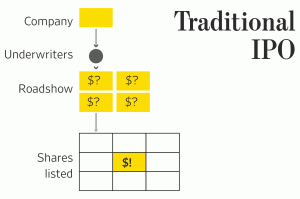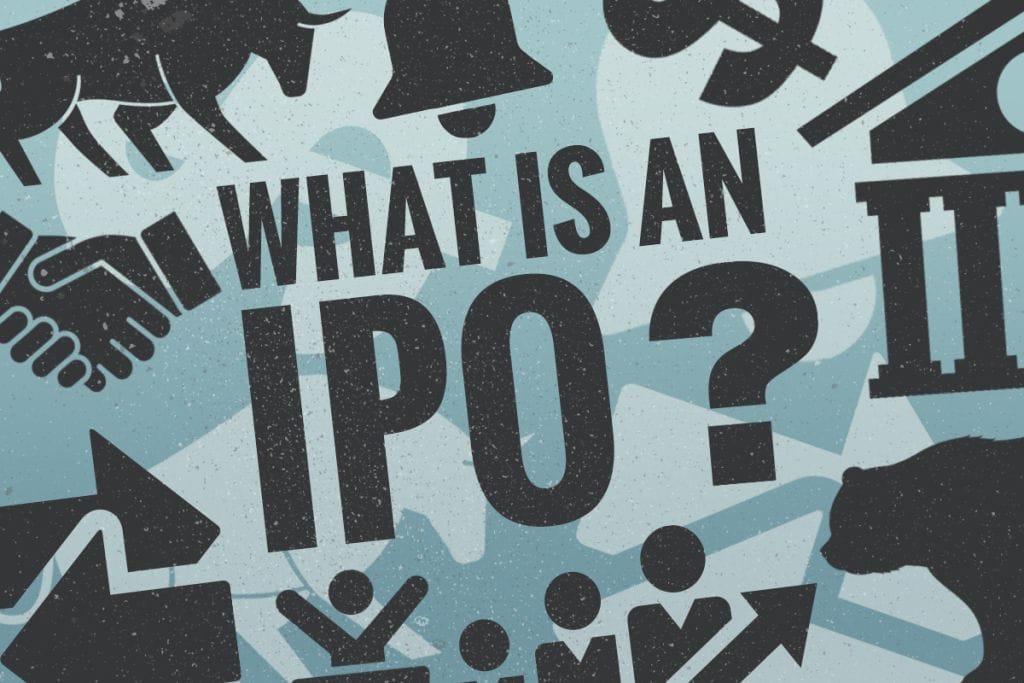Technology companies like Slack (WORK.Q) and Lyft (LYFT.Q) have one thing in common: their affinity to make losses.
But before Lyft fooled the retail investor, it fooled a bigger player: the buyer of its pre-IPO stock. The same isn’t true of Slack which opted for a direct listing instead.
Now, you may be asking yourself, ‘why should I care about the way a company goes public?’ The answer is that you don’t want to be the greater fool, do you?
A company in its life cycle often needs to raise capital at different stages for different reasons. Early on, it raises the money in the private markets and at a more mature stage, it raises money in the public markets.
But how the company goes public and allows for its shares to be freely traded significantly affects investors both before, and after the company has gone public.
Let’s take a look at the differences between the two.
IPOs
A company going public via an IPO roughly follows two stages. The first is the pre-marketing phase of the offering where investment bank(s) go out to private investors, buy-side funds, or anyone they know to generate interest and gauge the price that investors are willing to pay. They literally go out on an intense “roadshow” to build a book of orders.
In this process, the banks do some math, make some excel models, and conduct some financial analysis to come up with a range of values for the stock.
This “book building” process is a two street: potential investors are informed and the banks receive purchase orders.
In order to level the playing field for all investors, the SEC mandates a quiet period when the company cannot provide any additional information or forward-looking statements other than what is on its prospectus.
In the second stage, the shares are issued, and the company actually goes public and the stock is freely traded on an exchange. Well, not really, because not all the stock is up for sale. In the pre-marketing stage, the bank most likely made investors sign a contract highlighting a “lock-up period” when insiders or early investors can’t sell their stock for some days.
The lock-up period is usually 60 to 90 days but often depends on a case by case basis. The rationale behind this is to prevent investors from selling the stock too early and flooding the market with more shares than there is demand for, thus putting downward pressure on the stock.
It is the intensity of the process of capital raising through an IPO that investment banks charge 2% to 8% fee per share. Because the bank is earning via commissions, it’s in their interest to raise as much capital as they can.

Direct Listings
Companies are increasingly making use of direct listings instead of a traditional IPO as a route to the public markets. Spotify (SPOT.Z) started the trend last year, with Slack following suit a few months ago.
In a direct listing, there is no “offering”, or a “book-building” process that an investment bank engages in. There are no underwriters, no intermediaries, and no lock-up period for any new shares that are issued.
Before listing on an exchange, the company will host an “investor day” when they will publicly talk about their historical performance and financial results. The firm might meet with investors and funds one-on-one to build trust, but they will not build a book or take any orders for their stock.
Finally, the day before trading begins, the firm in consultation with its advisor (the bank) will declare a reference price for their stock. This is analogous to the price range in an IPO and its purpose is to merely serve as a guidepost for trading.
Liquidity in a direct listing is achieved by having the existing shareholders be willing to sell their shares without a lock-up. Everything can be bought and sold immediately.
Finally, the day the company goes public, an auction commences that indicates the size of the demand, and then the price at which people are willing to buy. Similarly, there is supply at a particular price. Once enough momentum is built, the “market maker” will let the shares trade freely.
As a consequence, it is the demand and supply of shares that determines the price of the stock from day one. This why a direct listing is often viewed as a more democratic process, with the free market determining the price of the stock without any lock-up period.
In conclusion…
The reason the greater fool is the pre-IPO buyer in Lyft (LYFT.Q) is that they most likely signed a lock-up period. The stock IPO-ed at $78.29 a share in March and has gone downhill since then. Sure, one would’ve lost money even if one had invested in the company at a later stage, but you would’ve lost much more had you bought the pre-IPO stock.
The reason I think that several small-cap firms, especially in mining and cannabis sectors need to be looking at direct listings as opposed to IPOs is threefold:
- It mandates transparency and allows the price of the stock to be set by the demand. Firms thus, need to be clear and concise about their business operations. You can’t have a shady deal and have it overlooked because you sold your stock to some high net worth individual. If they want to buy, they’ll get in line.
- It reduces the cost for firms as they pay less in commissions and fees. It’s not like they have much cash lying around anyway.
- It requires greater involvement from investors who can’t escape due diligence and fundamental research.
Hey, I’m not against IPOs. But I also think that the small-cap sector is better off with an active and educated retail investor, and a more transparent public company. A direct listing offers incentives to accomplish both, and hey, it’ll save you, and the company some money.
–Arth Gupta

